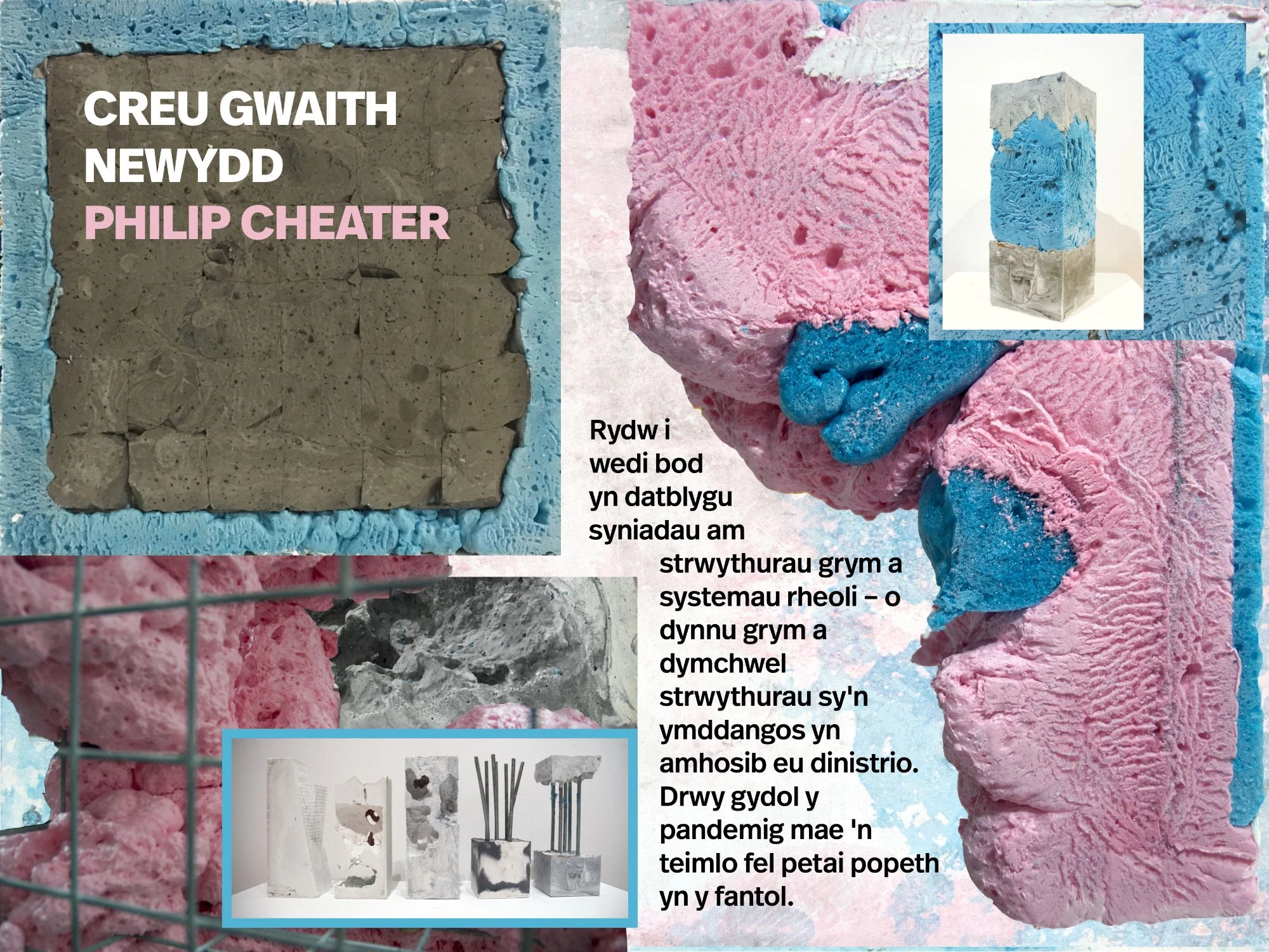Taking part in ‘Making New Work: Artists Respond to the Now’ – an innovative and progressive project to support artists to make new work - has made me feel incredibly fortunate to be selected as one of the participants.
The focus of the project was to provide support for artists, enabling them to make progress in their practice with funds for materials and equipment, travel to galleries and museums, and time spent in their studios. I was able to invest in a new kiln and kiln shelves to enable me to work more efficiently and effectively in my studio. It was also wonderful to be able to travel to visit museums and galleries after being restricted for so long due to the pandemic. I took full advantage of this opportunity and visited the Pitt Rivers and Ashmolean Museums in Oxford, MOMA Machynlleth, Aberystwyth Arts Centre, and Amgueddfa Cymru in Cardiff. We were also supported by brilliant mentors.
As a participant in the project, I was granted access to the ceramics collection in Amgueddfa Cymru and given an escorted tour by Andrew Renton, Head of Design Collections. It was a unique experience being able to spend time with Andrew and gain insight into the ceramics collection from his perspective. His responsibilities involve intellectual leadership for visual and applied arts and ensuring that Amgueddfa Cymru is recognised as a world-class centre in terms of its collections, research, public profile and public impact. He therefore had a different perception when viewing ceramics. One significant piece that we looked at was The Ten Commandments by British sculptor, Nicholas Pope. Artists who have a background in ceramics can often become focused on correct technique and the final outcome, whereas artists who haven't had that training often have a more relaxed approach to techniques and process and utilise the effects of different stages in the process, for example glazes that haven't matured.
As a conceptual ceramic artist, I frequently find myself in a dilemma between becoming overly focused on correct technique, at the risk of discarding effects achieved along the way. What I took away from my time spent with Andrew at Amgueddfa Cymru was that collectors and curators are not as concerned with process and technique as ceramic practitioners often are. I feel that this new perspective has given me licence to utilise the effects of the process at different stages.
At Aberystwyth Arts Centre, I was also given access to the ceramics collection, this time by Louise Chennell, Curator of Ceramics, with whom I had an interesting discussion about how ceramic artists/potters manage their time alongside family commitments, in light of the fact that creating ceramics is both time-consuming and expensive. I was especially keen to talk about how artists can return to their practice after bringing up a family, in which we shared a mutual interest.
For this project, I recorded people’s diverse reflections on Covid 19 and lockdown. My initial idea was to produce a wall-hung, modular installation based on the work of Mira Schendel and a book made out of paper-thin layers of paper clay. I subsequently developed this idea to incorporate braille, as a tactile element, and introduced references to the United Nations Conference on Climate Change 2021 (COP26), given the proximity between the pandemic and the environmental questions currently being raised. It was highly motivating and liberating to be given a framework of time to develop techniques, as well as receiving financial assistance to purchase materials to experiment with.
As part of the project, there was an artist takeover of ACW & NMW’s Instagram account, featuring the work of each nominated artist on the project. This offered us a means of showcasing our practice for the online public. It opened the door to me investing time in social media as a platform for promoting my work.
I was very privileged to take part in this project. I gained tremendously from it and hope that similar projects will be supported in future to allow others to benefit from such an invaluable experience.
“What I liked about your work for the recent project was that it conveyed the whole monotony of lockdown by using the single colour of white, but then you get subtle changes of shadows and relief patterns, just as you start noticing new things when certain distractions are removed.”
Observation by Gwenllian Lewis.





